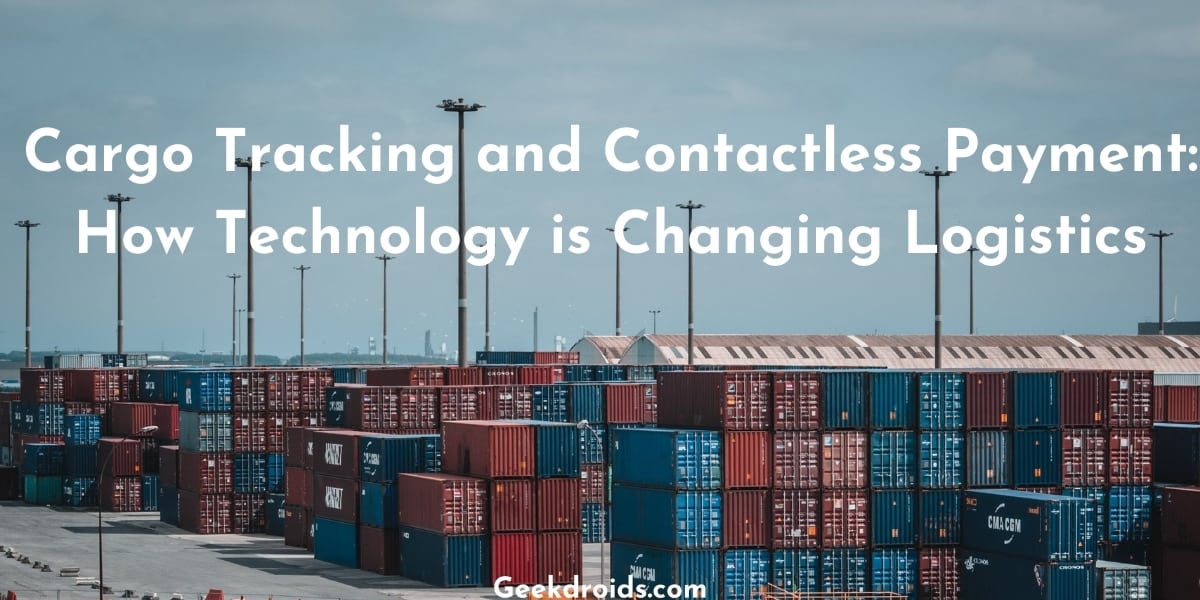The entire transportation industry is going through a transformation toward smart technology, IoT tracking and more seamless data exchange. The concept of contactless payment, which is gaining interest during the pandemic, is built on RFID technology. The consumer taps a debit, credit or smartcard at the point-of-sale (POS) terminal instead of swiping it and doesn’t need to enter a PIN number to complete the transaction.
Two billion people already use mobile wallets, another form of contactless payments. Digital transactions are gaining favour in the trucking industry for the same numerous reasons other industries have moved toward contactless payment. It’s a more convenient method for both parties especially when everyone is expected to practice social distancing. The two elements needed to achieve this system are a POS system and contactless payment software designed for companies that make several hundred transactions per day.
The American Trucking Association (ATA) has reported driver shortages in recent years, partly due to the rapid growth of e-commerce. It has created opportunities for new independent delivery services to enter the field, particularly for companies that invest in IoT technology and create a carrier app for on-demand delivery service. Adding a contactless payment system further makes life easier for the delivery personnel.
Contactless Payment System in the Trucking Industry
Page Contents
There are various types of contactless payment systems and contactless payment strategies deployed by trucking companies. The earliest use of this concept was in the 1990s by a small percentage of transportation companies, but it was very rudimentary compared with today’s technology. Some of the common options for current contactless payment systems include contactless smart cards, contactless bank cards, wearables and smartphone-friendly systems.
Strategies that have proven to be successful for trucking companies deploying contactless payment systems include automation, collaboration and contactless freight payment systems using mobile wallets or cards. Many trucking companies have moved toward automated solutions as a social distancing measure. Transportation companies are increasingly collaborating on last-mile delivery through partnerships, mergers and acquisitions.
Helping facilitate a digital transformation in the trucking industry is a driver app solution, which gives drivers all the information they need to complete deliveries accurately and on time. Developing an app for drivers reduces stress and uncertainty. Instead, it raises the level of comfort and confidence for drivers about their work.
Going to a contactless payment system modernizes the company and helps drivers avoid the shortfalls of the paper system. Last century trucking companies had to deal with lost payments and payment delays, whereas digital tracking technology eliminates the need for paper transactions. It also allows the company to accept multiple payment methods.
How Technology is Changing Logistics
- Shipment Tracking Systems – These days any type of cargo can be tracked in real-time to determine the current location of fleet vehicles and other delivery details. These systems use IoT devices that communicate data to a central location then make the information available to others in the supply chain.
- Supply Chain Track (Cargo Tracking) and Trace Technology – RFID technology has helped transportation companies improve management of routing, shipments and timelines. Entire supply chains can be enhanced by vendors sharing real-time delivery data. It allows for greater transparency and the ability of decision-makers to plan deliveries more efficiently.
- Radio Frequency Identification (RFID) – At the foundation of the IoT revolution is the RFID chip, which is a tiny radio transmitter that can communicate data to a central database. These chips can be placed in RFID tags embedded in products, packages, vehicles, cargo and containers to monitor activity. The RFID tag functions in a way similar to a barcode.
- Autonomous Trucks and Drones – The advent of driverless vehicles and drones can help streamline supply chains and the delivery process even more. Some large companies have already begun experimenting with unmanned delivery methods based on cameras and tracking systems.
Future Trends in Cargo Tracking and Digital Payment Solutions
The more digital trucking companies get, the more efficient they will become. The spread of 5G technology in the 2020s will play a significant role for all industries that transmit big data on a regular basis. It will allow much more data to be collected and shared within a supply chain. With this expansion in transmission will be a need for stronger cybersecurity. AI and machine learning software will help detect and block cyber threats.
Mobile contactless payment systems are already equipped with encryption, which so far has been very effective at blocking hackers. Since these systems detect cards from up to 4 inches away, the cardholder must still be present at a POS terminal to make a transaction. Due to the success of “tap and pay” card payment systems during the COVID-19 crisis, it’s likely this method and variations of it will be here to stay. It’s certainly more efficient than a cash payment system.
The reason trucking companies will continue to move in a more paperless direction is because digital solutions have already proven to save time, space, money and energy. One of the futuristic developments on the horizon for the industry is the use of biometric authentication methods. Fingerprint scanners and facial recognition software will become more common. The use of mobile POS, such as on mobile restaurant trucks, will be more seamless. It will open up new opportunities for low-cost local startups to target different neighbourhoods.
The future of the trucking industry technology will depend on developments in cloud computing and machine learning software. Cloud services are at the core of digital transformation, as some trucking companies work with IT specialists who design or recommend digital platforms. They will continue to help businesses cut costs on infrastructure and computing power. Delivery firms that aren’t connected with the cloud will simply not be as reliable as cloud-based competitors.
Machine learning will also be a core component that shapes the future of transportation. It can already be used for recommending solutions to routing based on multiple factors such as road conditions and weather. Current technology is already powerful enough to give supply chain members real-time data that predicts departure and arrival times with a high degree of precision.
Conclusion
The trucking industry is helping pioneer a digital transformation that includes IoT, real-time cargo tracking and contactless payment. This new direction brings greater efficiency and convenience to trucking companies. Modern automation technology such as self-driving vehicles and delivery drones will provide further options for transporting shipments safely from one place to another. Firms that adopt this digital transformation will have an edge over competitors that resist technological change.







